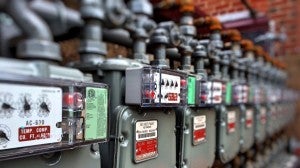
UPDATE: Since the March 2016 publication of this original blog post, the Indiana Utility Regulatory Commission (IURC) last week issued an order officially approving a settlement agreement Environmental Defense Fund, along with several other stakeholders, helped negotiate for Duke Energy’s grid modernization plan. The IURC’s order approved the settlement (details of which are outlined in the post below) without change. Now Duke Energy can proceed with the $1.4 billion plan, which will bring many clean energy benefits to Duke’s 800,000 customers.
Help is on the way to reduce harmful pollution in Indiana, which has the seventh highest level of greenhouse gas emissions in the country.
Environmental Defense Fund (EDF) joined a settlement filed this week for Duke Energy’s grid modernization plan. The settlement calls for Duke – the largest utility in the country, which serves over 800,000 Indiana households – to invest $1.4 billion over the next seven years to improve its electric grid. Doing so will deliver major benefits for Duke’s customers.
Duke to make strides on “right sizing” voltage
As part of the investment agreed upon in the settlement, Duke agreed to spend $200 million on voltage optimization – a proven, cost-effective technology that enables utilities to operate the electric grid more efficiently. It is one of the lowest “low-hanging fruits” a utility can invest in to lower energy usage and greenhouse gas emissions.
Some utilities overpower homes and businesses with more voltage than they need. Voltage optimization technology gives utilities greater visibility of the state of the electric grid. With this information, they can adjust voltage to match the precise electricity needs of customers. People receive the right amount of energy to run their machines and appliances, resulting in energy savings, without having to lift a finger. These energy savings will, in turn, reduce greenhouse gas emissions throughout Duke’s territory.
Duke agreed to file monthly reports on its energy savings and greenhouse gas reductions, as well as file a business plan to expand this technology to the rest of its grid.
[Tweet “Indiana Formally Approves Duke Energy’s Grid Modernization Plan”]
New smart meters will be put to full use
In addition to voltage optimization, Duke will install smart meters for its customers, enabling two-way communication between a customer’s meter and their utility. The smart meters will reduce operating costs, provide greater electricity reliability, and give customers exciting new opportunities to lower their energy bills. Duke did not add the smart grid costs to the current grid modernization plan.
Through the settlement negotiations, EDF aimed to ensure Duke delivers customer benefits. Too often, utilities install smart meters but don’t allow customers to unlock their full value. EDF advanced this goal by securing Duke’s agreement on two innovative energy efficiency pilot programs:
Cost-effective grid upgrades and energy efficiency programs, like the ones in Duke’s grid modernization program, are straightforward ways utilities can advance clean energy and reduce harmful pollution.
- The “bring your own thermostat” program will let customers link their smart meter to an existing thermostat. Customers can volunteer to receive an alert a few times a year when there is high demand for electricity, which can overwhelm the electric grid (also known as demand response).For example, Duke would then briefly shut off the compressor on the customer’s air conditioner, while keeping the fan on to circulate cool air so they receive the same level of comfort. With this program, customers can lower their energy bill and Duke can lower harmful pollution from power plants, which would otherwise be needed to provide that electricity.
- The “home energy monitor” program will give customers a device to monitor how much energy they are using in real-time. Studies have shown customers who have these devices experience energy savings of up to 18 percent. As with the “bring your own thermostat” program, these home energy monitors will significantly reduce harmful pollution by helping people curtail their overall energy use or shift their use to a lower-priced time period.
Cost-effective grid upgrades and energy efficiency programs, like the ones in Duke’s grid modernization program, are straightforward ways utilities can advance clean energy and reduce harmful pollution. Duke’s program will benefit customers and the environment, and help Indiana progress toward a 21st century electric grid, serving as a model for utilities throughout the country.









